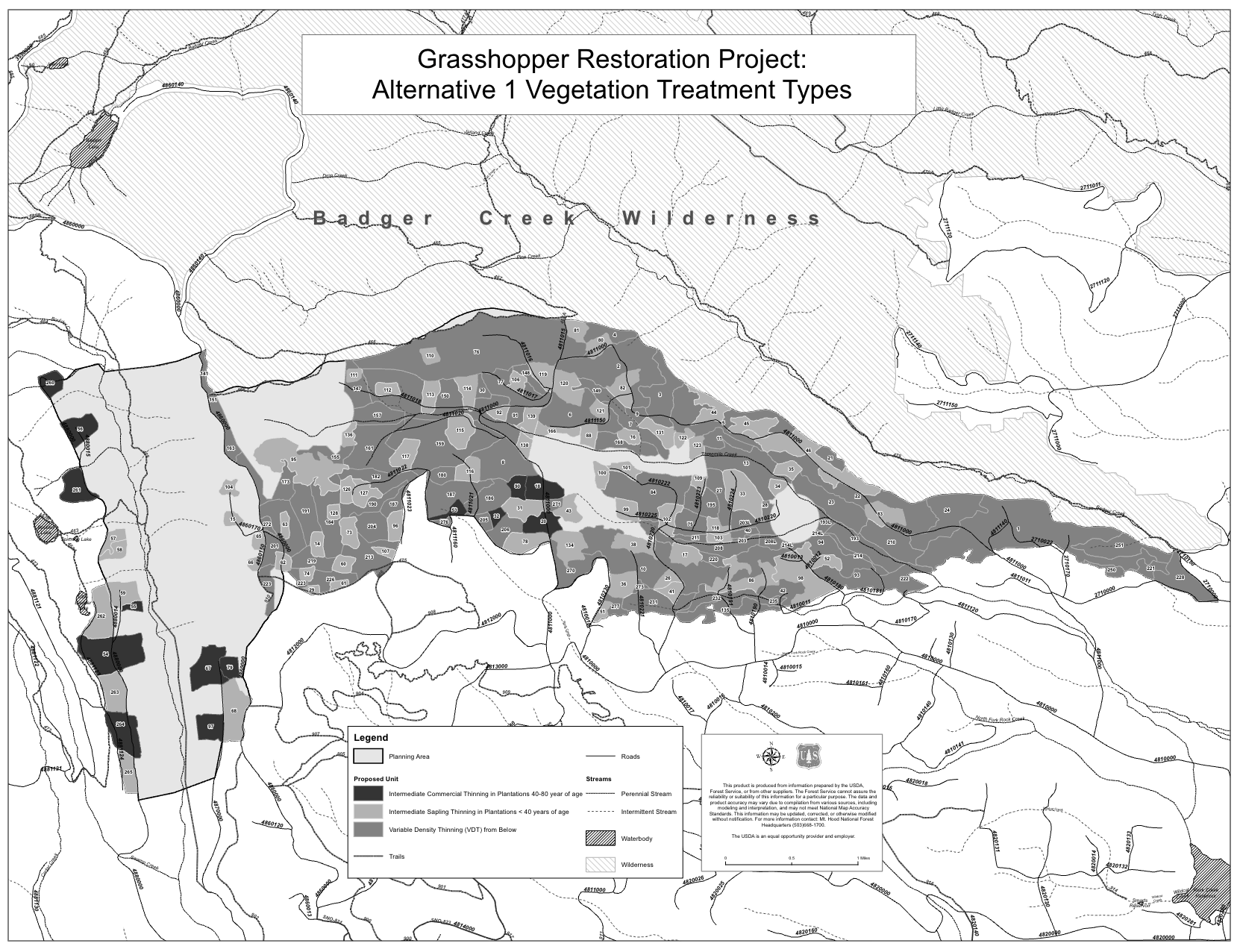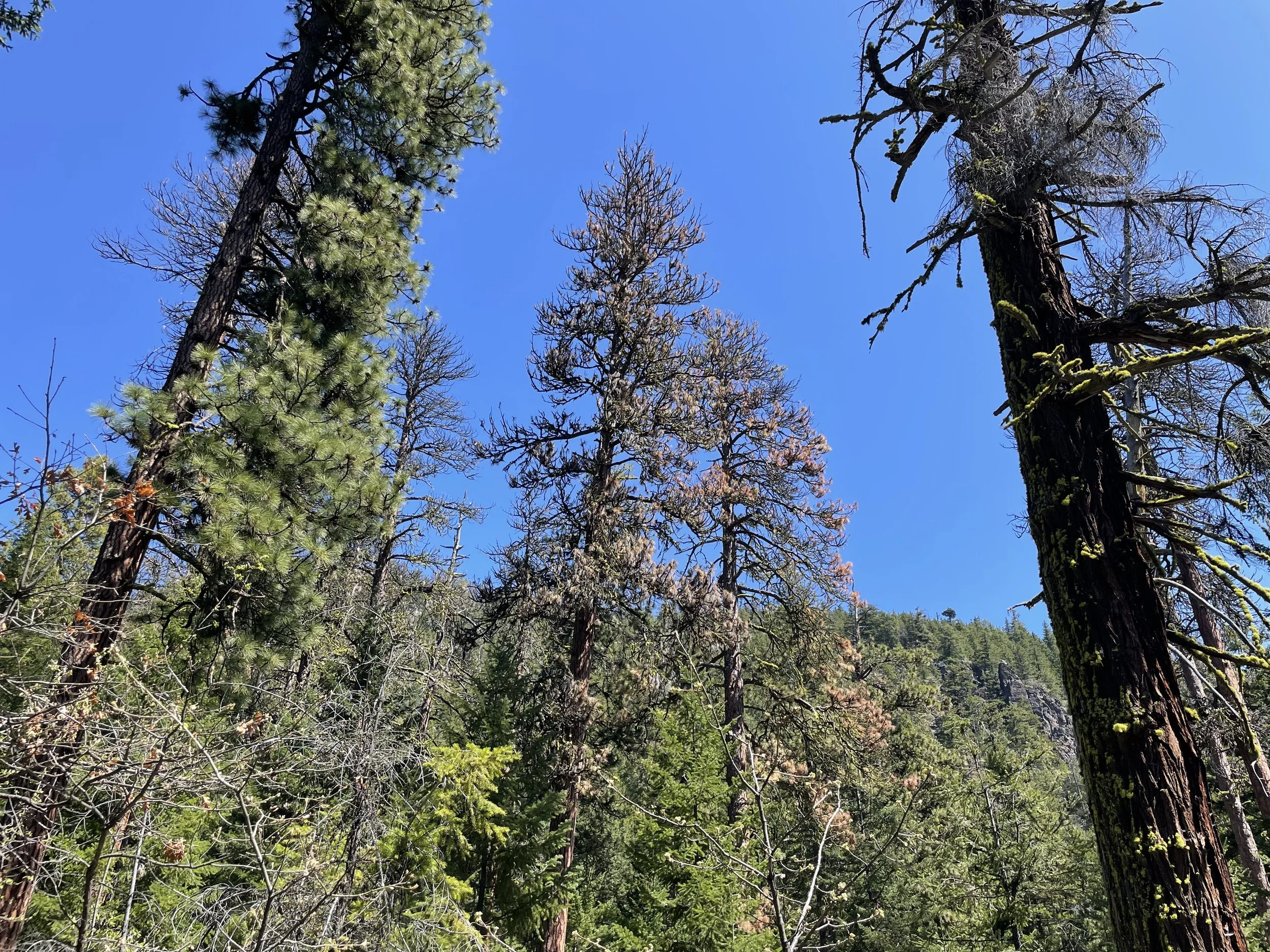Grasshopper Restoration Project
The purpose of the Grasshopper Restoration Project is to improve forest health and resilience by reducing overly dense tree stands, restoring natural forest structure, and lowering wildfire risk in the Grasshopper planning area. Decades of fire suppression and past management have led to unhealthy conditions—such as excessive dead fuels and competition among trees—that make the area more vulnerable to high-intensity wildfires, especially near at-risk communities like Wamic, Pine Hollow, and Sportsman’s Park.
The project aims to:
Reduce wildfire risk, especially in the Wildland Urban Interface.
Restore forest diversity and structure, especially in pine-oak and riparian areas.
Protect and enhance wildlife habitat.
Maintain safe access roads for public use and firefighting.
Provide sustainable forest products to support local economies.
Map of proposed treatments included in the Grasshopper Restoration Project.
The Grasshopper Restoration Project proposes to thin overly dense forests to reduce wildfire risk and help forests grow healthier and more resilient. This means carefully removing some trees in different areas depending on the age and condition of the forest. Crews will use a method called thinning from below, which means removing the smaller, more crowded trees while keeping the biggest, healthiest ones. This helps reduce ladder fuels and improve growing conditions for the remaining trees.
Here’s what that looks like in simple terms:
Younger tree stands (under 40 years old) will get sapling thinning, which removes smaller, less healthy trees to make room for stronger ones to grow (about 1,422 acres).
Mid-aged tree plantations (40–80 years old) will be commercially thinned, meaning select trees will be removed and sold for timber, mostly in areas where all the trees are about the same age (about 355 acres).
Mixed-age forests (with trees of different ages) will receive variable density thinning, which carefully removes trees from below the canopy while keeping a mix of tree ages and sizes. This approach helps mimic disturbances that would have occurred in natural forests with an active fire regime and supports wildlife and plant diversity (about 3,503 acres).
Overall, the project will thin about 5,280 acres to reduce fire risk, improve tree health, and restore natural forest conditions.
Portions of the Grasshopper Restoration Project area are experiencing mortality in legacy ponderosa pine. Old-growth ponderosa pine are dying because too many younger trees—especially fire-sensitive species like grand fir—are crowding them. This crowding leads to intense competition for water, which stresses the large, older pines. Without regular low-intensity fires, which once naturally cleared out small trees and underbrush, these dense, overstocked conditions persist, making the old trees more vulnerable to drought, insects, and disease.
Fun fact: grand fir are less drought tolerant than ponderosa pine because they cannot fully close their stomata—tiny openings on needles that regulate water loss. As a result, grand fir continue to lose water through evapotranspiration even during dry conditions, making them more prone to drought stress. In contrast, ponderosa pine can close their stomata to conserve water, making them better adapted for drought.
To learn more about the Grasshopper Restoration Project visit the Mt. Hood National Forest website here.



